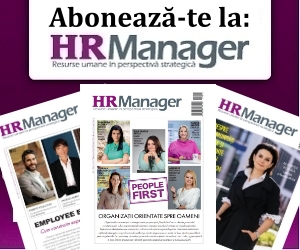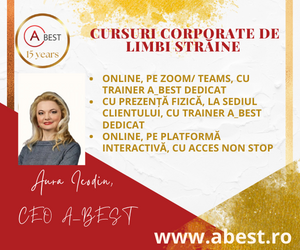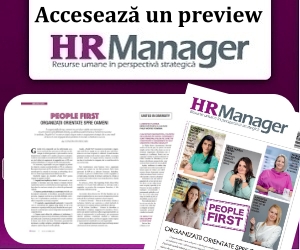
I’ve been an analyst following the HR Tech market for almost 20 years now, and this year things are changing faster than ever. In this article I’ll summarize the ten big changes going on.
By John Bersin
- A massive shift from „automation” to „productivity”
For many years the focus on HR technology was to automate and integrate HR practices. This meant online payroll, record-keeping, learning management, resume capture, interview and hiring, assessment, performance appraisals, compensation, management, resume capture, interview and hiring, assessment, performance appraisals, compensation etc.
Well all that’s important, but it’s just „business as usual” now. A wide range of cloud-based HRMS and payroll vendors are now in the market, and you get very little credit for „automating” HR. (You do get penalized if you don’t of course). This new High-Impact HR (HIHR) research shows that about 45% of companies are still focused on basic process automation, so I understand if this is still top on your list.
But beyond automation, as the HIHR article discusses, the big topic in business today is productivity. We are now working on agile, team-centric organizations, and we are overwhelmed with too much to do. Burnout, focus, and employee engagement are all issues, and we are now dealing with email, messaging from many different systems, and a plethora of communication tools that overwhelm most of us. Can we build HR software that really improves productivity and helps teams work better together? That’s the next challenge.
- Acceleration of HRMS and HCM Cloud Solutions, But Not The Center Of Everything
In the last five years, cloud-based HR has become the rage. I could list more than two dozen highly successful vendors that offer HRMS, payroll, and many talent management services in the cloud. And in most cases they are offering financials and other ERP solutions as well. So the question for most companies is no longer „if” you go to the cloud, but rather „when” and „how.”
Well it’s harder than it looks. Despite these rapidly maturing solutions, only about 40% of companies today use cloud HCM solutions, and my experience with large companies is that the migration often takes 2-3 years or longer. (There is a lot of customized HR software out there.) So we are going to be „moving to the cloud” for a while yet, and the decision of which vendor to select looms large. In fact most companies ponder their vendor decision for months (or years), and feel the decision will have radical impact on their entire employee population.
Well despite strong marketing from the HCM companies, I believe this worry is misplaced. While the cloud HR and payroll system is a critical system for any business, it can be replaced. And the more important technology you buy (as I discuss in trend 1) is the talent and team management software. So your architecture looks more like a „set of services” all focused on making employees’ lives easier… not a single cloud vendor.
This topic will be the subject of another article, but let me just tease you with the slide below. This is what HCM architectures of today really look like. The most critical part might be that green layer in the middle, which we can probably call the „employee services” layer (which is looking more and more like chatbots every day).
My belief is that a new „breed” of HCM software is emerging, and as I describe above, I believe it looks more like „team management” and less like „talent management” every day.
- Continuous Performance Management Is Here: And You Should Get With It
I wont belabor this topic, but the answer is now clear: continuous performance management is possible, it works, and it can transform your company. We are not talking about doing away with ratings, rather we are talking about building a new, ongoing process for goal setting, coaching, evaluation, and feedback.
The report discusses all the details (including vendors) but let me leave you with one big finding: despite the tremendous success of the cloud HCM vendors in the market, most do not have a total solution for this problem. So you are going to be buying new products to address this issue, and these new „team-centric” tools are likely to become the future leaders in the HCM market of the future.
- Feedback, Engagement, and Analytics Tools Reign
Only a few years ago the engagement survey market was a robust but sleeply place. Today it has become a dynamic world of real-time survey systems, sentiment analysis software, organizational network analysis (ONA) tools, and products that actually automatically ask your peers for feedback to give you real-time coaching.
And open feedback tools are growing again, giving employees many new places to comment on the workplace. A new area of growth is the explosion of systems to offer pay transparency and are now crowdsourcing and providing benchmarking tools to help you „find your worth” (a phrase Glassdoor coined) through open feedback and benchmarking.
As I wrote about a few years ago, I believe this explosion of transparency has been very healthy for business, and it has spawned a new set of pulse surveys, AI-based analysis and recommendation systems, and culture assessments throughout the marketplace. You can get this technology from startups, ERP vendors, talent management systems, and embedded in the new performance management systems. I think companies have to think about this as an overall architecture, but this is still a new world.
- Reinvention of Corporate Learning Is Here
I’ve written about this extensively, but the simple message is this: a new breed of corporate learning tools has finally arrived, and companies are snapping them up quickly.
These include the „experience platforms,” a new breed of „micro-learning platforms,” modernized LMS systems, and new AI-based systems to recommend learning, find learning, and deliver learning. Virtual Reality-based learning is now alive and well, and I expect to see smarter and smarter technologies to help us find „just what we need” along the lines of performance support. And you can now buy systems that let employees publish and share content without any major effort on your part.
- The Recruiting Market Is Thriving With Innovation
Recruitment is the largest marketplace in HR. Companies spend billions each year on recruiting and it has become an escalating war for employment brand, candidates, candidate experience, and strategic sourcing. High volume recruitment (hospitality, services, healthcare, retail) is being automated by chatbots and other new tools; skilled job recruitment is being revolutionized by open sourcing tools, more automated applicant tracking systems (now called recruitment management systems), and better assessments. And video assessment and culture assessment tools have matured so far that everyone can use them.
I find this part of HR technology the most dynamic and innovative, primarily because every major company has to buy a whole tapestry of tools to compete. I liken the recruitment technology market to the problem builders face in construction. You need an entire toolset of world-class machines to do the job, and each one has its own learning curve to use well. Recruiters are like the finished carpenters of the trade: they become better and better over time, and suddenly you find out your competition is stealing your people and you don’t know what hit you.
The market has gotten hotter than ever, with unemployment rate near record lows. We are back into the „war for talent” (a 15 year old phrase) and this time „the talent is leading the charge.” In other words, all the new technologies are making recruiters smarter about candidates, just as candidates are getting smarter about your companies.
Remember also that the old fashioned „job description” is really going the way of the dinosaur. More and more jobs are „hybrid” and rapidly changing, so the new world of tools has to help us find people with the right capabilities and learning skills, not just technical or cognitive abilities. And diversity is now a core part of recruiting, with new technology to help remove bias from job descriptions and reduce bias in interviewing (even VR can help with this).
- The Wellbeing Market Is Exploding
I probably don’t need to mention that HR technology, content, and tools for wellbeing may likely be the next „big thing” in business. Not only do we need tools to improve productivity and reduce cognitive overload, but we also need „nudges” and data to help us exercise, stay mindful, and learn how to sleep and eat better. In the report I tried to describe some of the most innovative new solutions in the market. My experience with these vendors is that most of them are driving tremendous value for their customers, and the clients I talk with are seeing rapid adoption of these tools (especially among younger workers) and great improvements in engagement, health, and mental wellbeing.
At Deloitte, following the path of most companies, the wellbeing initiative moved from a focus on „health” to a focus on „reducing burnout” to a new focus on „human performance.” This is the journey most HR departments are going through and the vendor market is moving fast.
We have been doing research on „energy at work” and I think this concept may best encompass the new world of „engagement, productivity, and wellbeing” in one simple concept. These new tools can help us measure energy, figure out why and where energy is low, and give us individual nudges and tips on how to improve our energy.
- People Analytics Matures And Grows
We will soon launch our new maturity model on People Analytics and what you’ll see is a tremendous shift from companies „playing with models” to companies „seriously investing in infrastructure” to bring all their people data together. As I’ve discussed many times, employee-related data (and all the aspects it includes) is just as important or more important than customer data, because it tells you the secrets of how to manage your business better.
The marketplace is now rich with embedded solutions (nearly every HCM vendor has embedded analytics, many with prediction engines), and all the new vendors are starting to apply AI to their offerings. While this market has been very long in coming, the growth of cloud platforms is now making it explode, and it’s easier than ever to build a manager-level dashboard that helps your teams understand what they can do to make the work experience better.
At the corporate level, the ONA software market is now growing (organizational network analytics) so a new world of „relationship analytics” is taking hold. We can now look at core HRMS data (turnover, tenure, performance rating), relationship data (who you know, who you spend time with, what teams you are part of), wellbeing data (your activity, location, energy, wellbeing), and your sentiment data (feedback, mood, and sense of belonging). All this data is falling into the laps of HR departments and they are now staring to grapple with the issues of ethics, privacy, and becoming more transparent about what analytics they are doing.
There is a fundamental shift away from „PhD People Analytics Projects” to more business-oriented programs that help study sales performance, team performance, and other business critical issues. And as I discuss in the report, companies at Level 4 in our new model are delivering real-time dashboards to managers to make this all actionable. I personally see People Analytics as the lynchpin of success for HR in the next few years, as all these other technologies throw off data at an ever-increasing rate.
- Intelligent Self-Service Tools
If you’re a software person like me, you have to ask the question: how do we bring all this „stuff” together into a seamless employee experience to make work better? Do we build apps? Do we upgrade our employee portal? Do we hope AI and conversational systems will sit on top of everything? It’s quite a complicated issue.
In today’s HR technology environment perhaps the most important new market is the fast-growing need for self-service, employee experience platforms. As I describe in the report, these are fast-changing systems that bring case management, document management, employee communications, and help-desk interactions into one integrated architecture. They sit between employee apps and back end applications, and they serve as the lifeblood of your employee service centers (which are going to be more automated every day).
And AI is coming fast. We had Diane Gherson the CHRO of IBM come to our research conference this Spring and she showed off a cognitive manager coach, a cognitive career coach, and a cognitive recruitment coach. Most of these tools are now becoming products to buy, and I’ve seen and talked with vendors that offer smart chatbots (focused on a single domain), intelligent agents, and amazingly fun games that make training, expense reporting, time tracking, and almost every other HR function easy. One vendor showed off a voice application which lets you query the system for vacation balance, performance tips, and even compliance training.
I think this is a huge new market, and I”m not even sure what to call it yet.
- Innovation Within HR Itself
The tenth disruption I’ve written about is the incredibly rapid growth in innovation projects within HR teams. We, as HR professionals, are now becoming the disruptors. It used to be we waited for tech companies to invent things – then we figured out how to use them and bought them. Now HR departments are experimenting with new performance management models, new learning strategies, new ways to reduce bias, and new techniques to recruit and coach people. Then they go into the market and see if vendors are available. This shift to me is a disruption itself – forcing the HR technology community to move even faster than ever.
This is a rapidly changing market and one in hypergrowth mode this year. I hope my humble thoughts will help you make some sense of all these changes.
 Acest material a fost preluat din numărul 56 al Revistei HR Manager.
Acest material a fost preluat din numărul 56 al Revistei HR Manager.





















